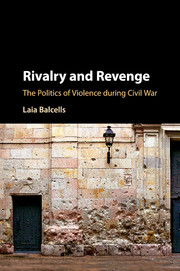7 - Additional Evidence and Macro-Level Implications
from PART III
Published online by Cambridge University Press: 18 May 2017
Summary
INTRODUCTION
In the previous chapter, we saw that the main theoretical predictions in the book fit not only the patterns of violence during the Spanish Civil War but also violence during the civil war in Côte d'Ivoire. This chapter introduces additional evidence complementing the main analyses in the book. Firstly, I present evidence from research on low-intensity inter-group violence in post-civil war Northern Ireland, which provides results consistent with the prediction that violence increases with parity between groups in conflict (in this case, Catholics and Protestants), even in non-civil war contexts. I also refer to research conducted by other scholars that provides evidence broadly supportive of my theory. Secondly, using a cross-national dataset covering all civil wars with more than one hundred battle deaths in the second half of the twentieth century, I explore macro-level variation in intentional violence against civilians and I explain it through the lens of my theoretical framework.
EVIDENCE FROM OTHER CASES
In research with Lesley Ann-Daniels and Abel Escribà-Folch, we explore geographical and temporal variation in inter-group violence (i.e., between Protestants and Catholics) in Northern Ireland. We use an original dataset of incidents of sectarian violence in this region from 2005 to 2012, with the ward-year as the unit of analysis. Low-intensity sectarian violence has been prevalent in Northern Ireland since 1998, when a peace agreement put an end to the civil war that had plagued this region since 1969 (the so-called “the Troubles”). Incidents of sectarian violence are not necessarily lethal, and they include violence against individuals, symbols, and buildings, verbal threats, and even riots (all of these constitute what we call low-intensity inter-group violence). Thus, the type of violence explored is different from the type of violence that I have analyzed in this book, which has focused on wartime lethal violence.
Figure 7.1 reveals the geographical variation in low-intensity violence across Northern Ireland's wards during the period under study (in some wards, violence could reach as many as 78 incidents in a year, while 7 percent of wards witnessed no incidents during this time period).
- Type
- Chapter
- Information
- Rivalry and RevengeThe Politics of Violence during Civil War, pp. 171 - 180Publisher: Cambridge University PressPrint publication year: 2017

